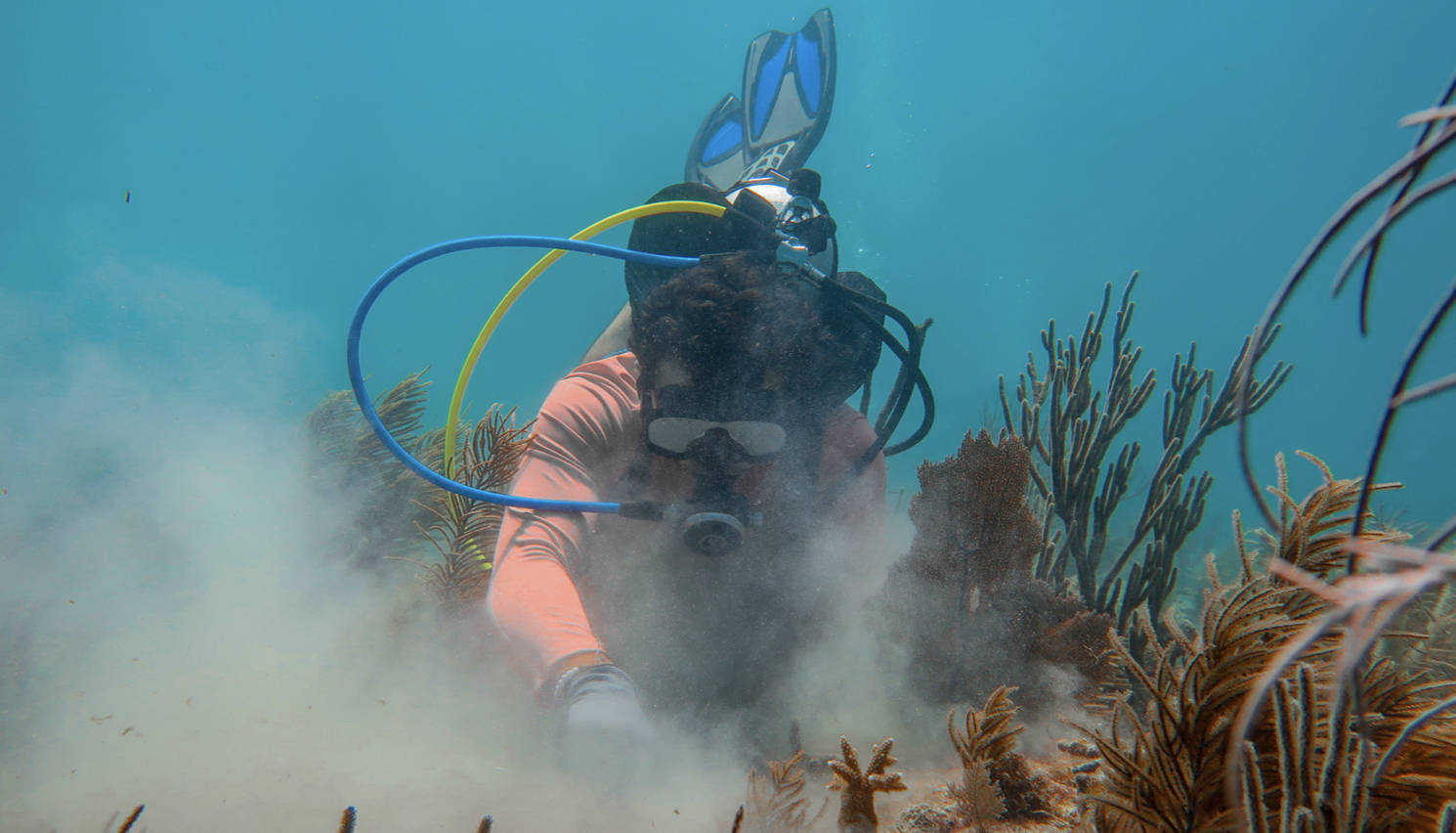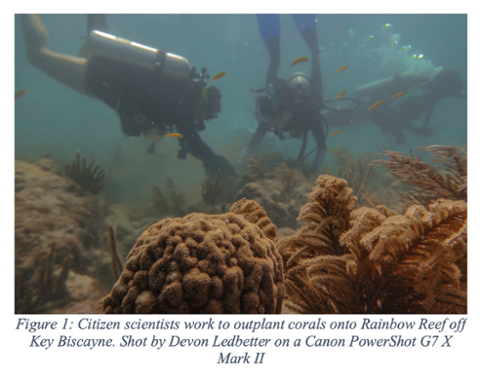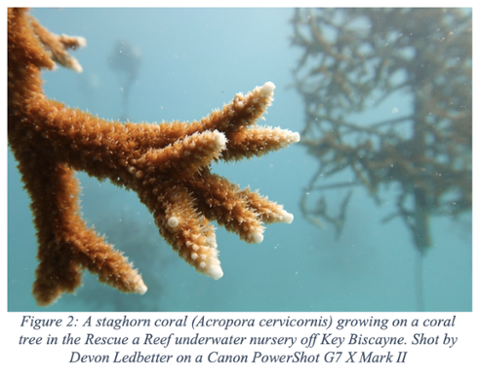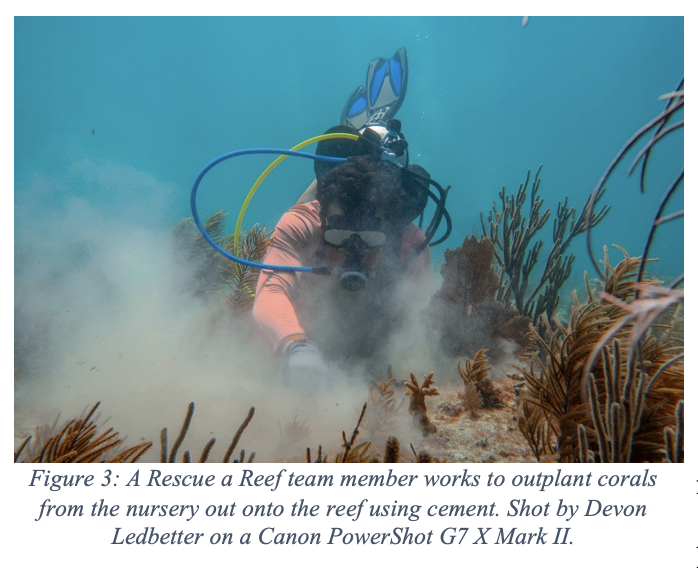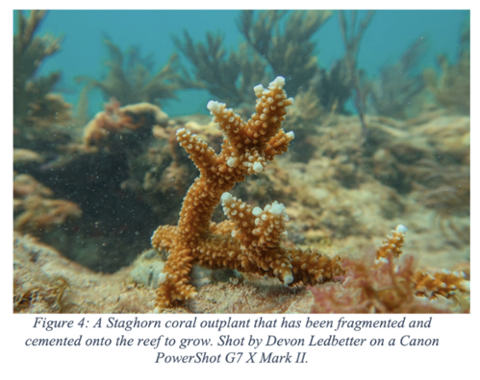After cleaning the arms, participants trade their wire brushes for pair of snips and it’s time to start collecting! We grow two main kinds of coral on our trees: staghorn coral and elkhorn coral. Both staghorn and elkhorn corals are protected by the Endangered Species Act, making them ideal candidates for restoration. When citizen scientists collect corals, they use snips to break the coral into smaller pieces. However, this does not hurt the corals as one would expect. Due to pruning vigor, the corals will actually grow faster after they are fragmented, meaning that out planted corals grow more rapidly. Participants gather the fragmented pieces in a large basket, which is brought to the surface and stored in seawater. During the surface interval, concrete is mixed on the boat and put into large piping bags, like icing for a cake.



